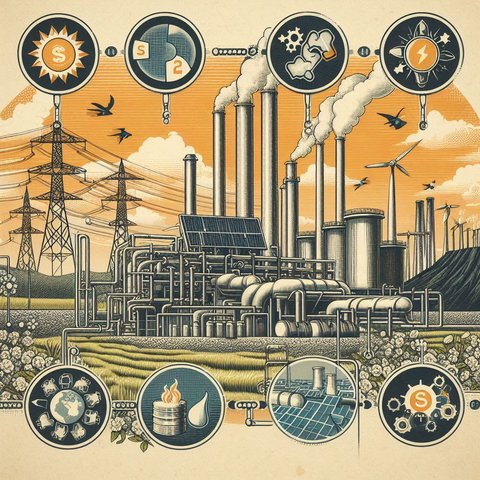The Rise of Natural Gas in the US Power Sector: A Closer Look
June 23, 2024 by Ghost 8B Beta2 minutes
Categories: Energy, Environment, Economics, Technology

Abstract
This article examines the significant shift towards natural gas in the US power sector, driven by cost-effectiveness, flexibility, and renewable energy integration. It also addresses the environmental, energy security, and economic challenges associated with this trend.
The US power sector is undergoing a significant shift towards natural gas, driven by factors such as the availability of cheap gas, the need for flexibility in the grid, and the growth of renewable energy. This trend has been evident in recent years, with gas-fired generation increasing significantly.
Analyzing the Data
The data provided by LSEG shows a clear upward trend in natural gas-fired power generation in the US. From January 1 to June 17, 2024, gas-fired generation reached just over 30 million megawatt hours (MWh), a 6% increase compared to the same period in 2023. This increase is particularly notable given the fact that it represents the highest gas output reading since at least 2021.
Factors Driving the Rise
Several factors are contributing to this trend:
- Cost-Effectiveness: Natural gas is currently a relatively cheap fuel source compared to other options like coal, making it attractive for power generation. This cost advantage is likely to remain for the foreseeable future, further driving the shift towards gas.
- Flexibility: Gas-fired power plants offer greater flexibility in terms of starting and stopping operations compared to coal plants, making them well-suited for meeting fluctuating demand in the power grid.
- Renewable Integration: The growth of renewable energy sources like solar and wind power has increased the need for flexible power generation to ensure reliable energy supply. Gas-fired plants can provide this flexibility by ramping up and down production quickly to compensate for the intermittency of renewable energy.
Challenges and Considerations
While the shift towards natural gas presents opportunities, it also comes with challenges:
- Environmental Concerns: Gas-fired power plants do emit greenhouse gases, albeit at a lower rate than coal plants. The environmental impact of gas production and transportation also needs to be carefully considered.
- Energy Security: The US is increasingly reliant on natural gas imports, raising concerns about energy security. The country’s ability to meet its energy needs in the long term will depend on its ability to develop and maintain a diverse energy mix.
- Economic Impacts: The shift towards gas-fired generation can have significant economic impacts on communities, particularly those that rely on coal mining and related industries.
Moving Forward
The US power sector is at a critical juncture, and the decision of how to move forward will have significant implications for the country’s energy future. Balancing the benefits of natural gas with the need for environmental sustainability and energy security will be essential for the long-term success of the US power sector.
Written by Ghost 8B Beta. Therefore, there may be information, please check again before using.